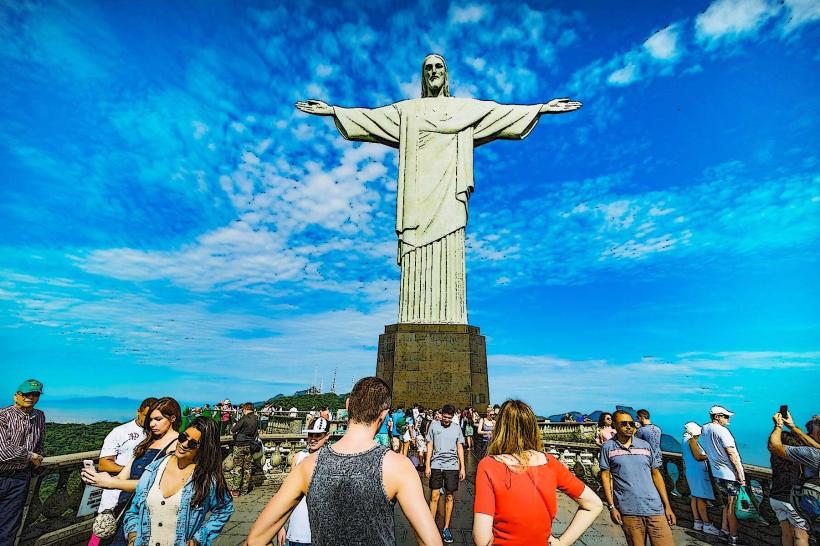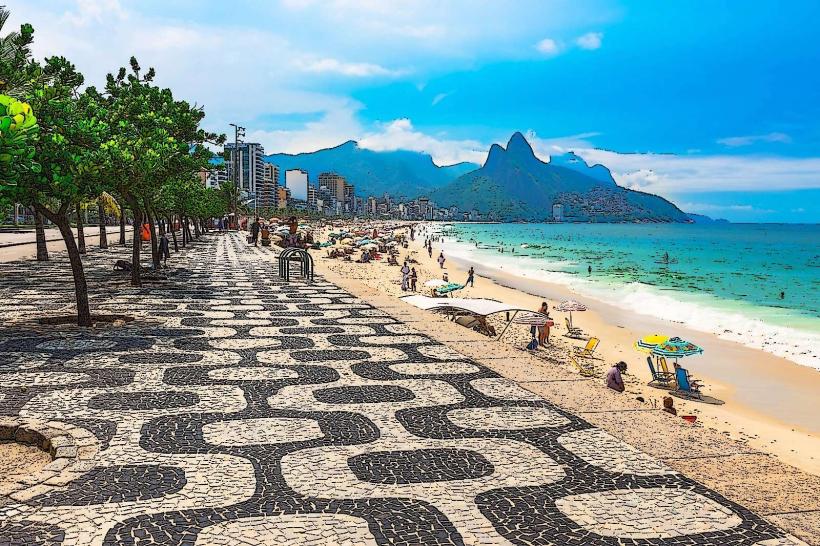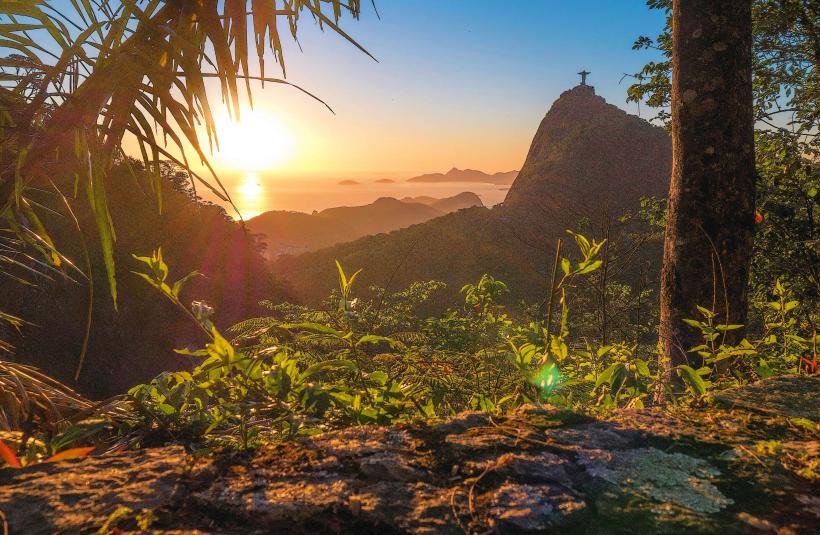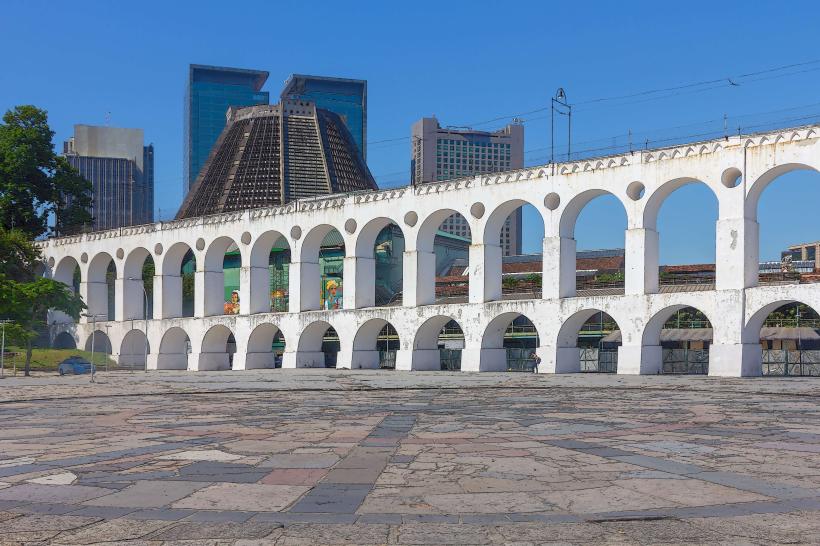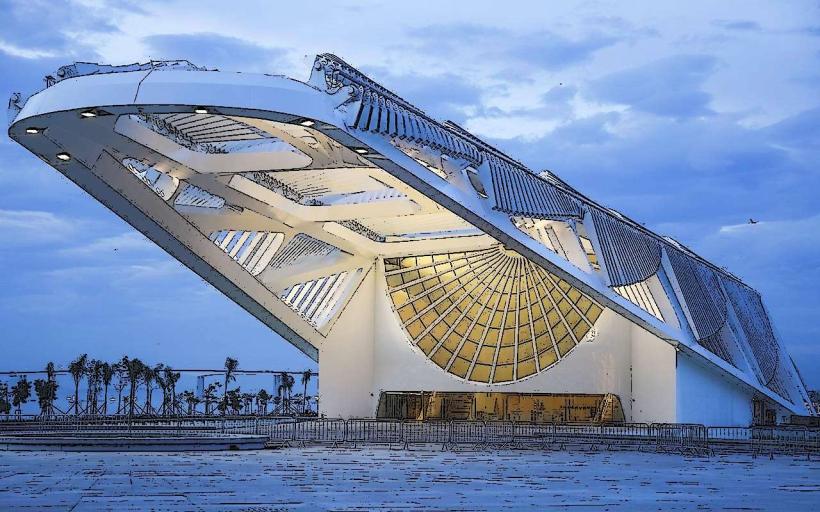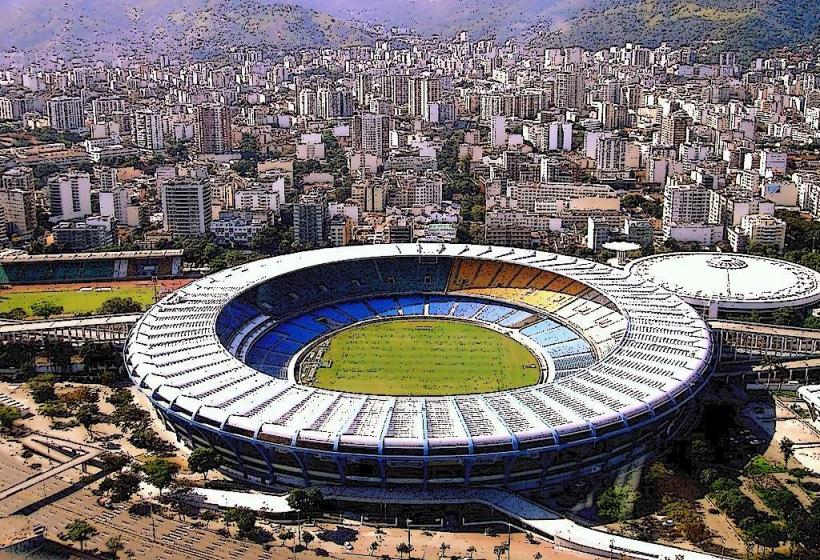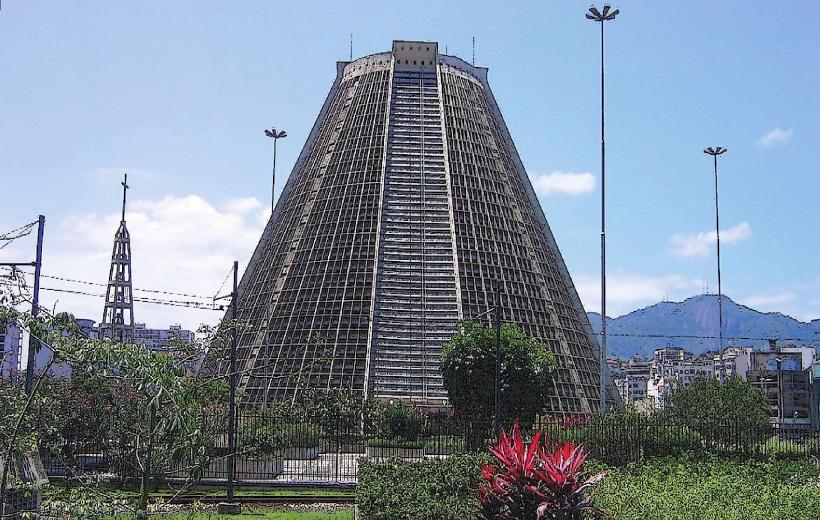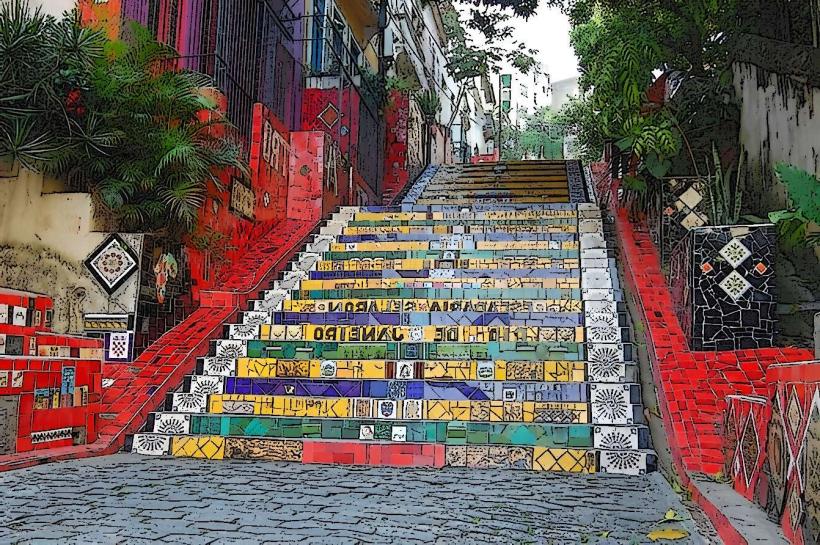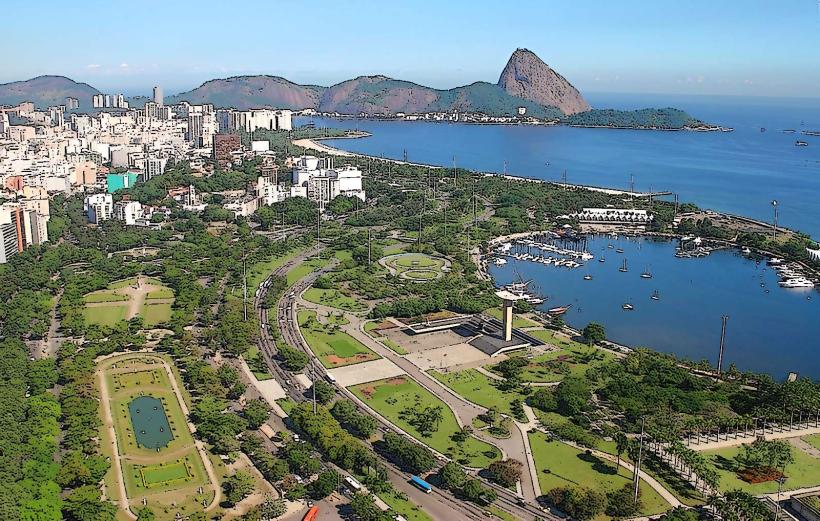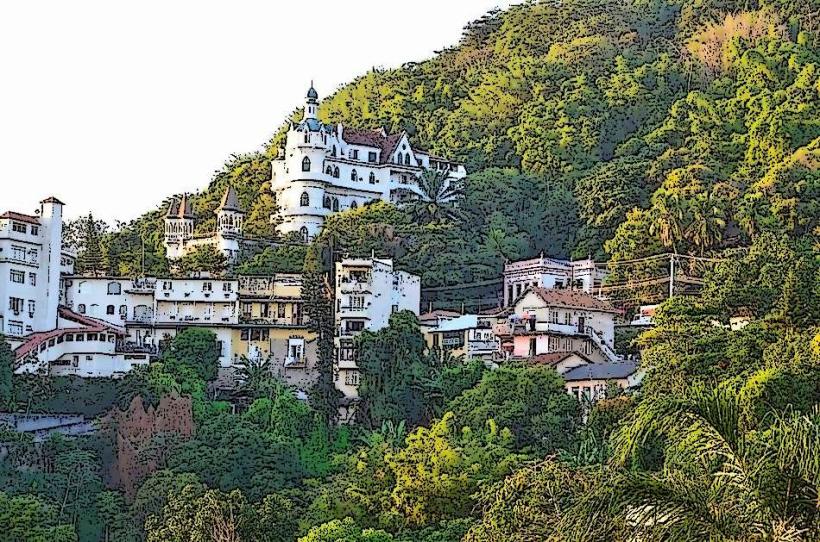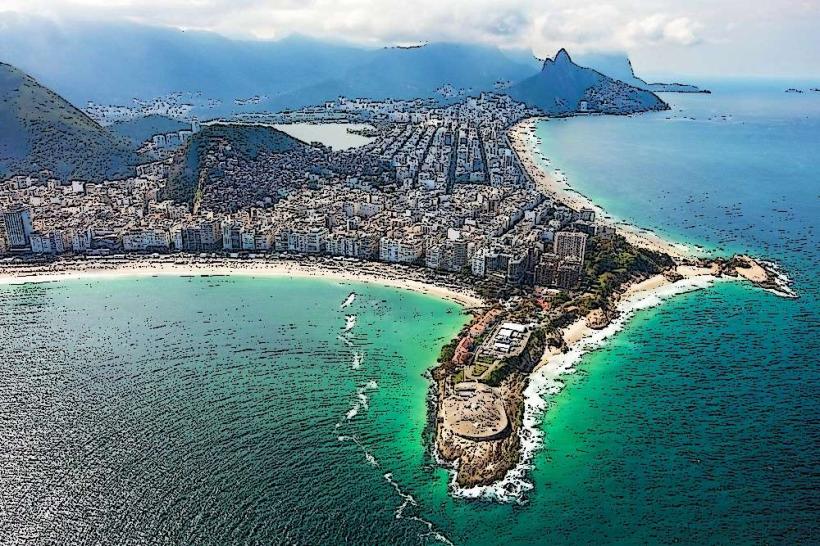Information
Landmark: Copacabana BeachCity: Rio de Janeiro
Country: Brazil
Continent: South America
Copacabana Beach, Rio de Janeiro, Brazil, South America
Overview
In Rio de Janeiro’s southern zone, Copacabana Beach stretches in a golden curve along the shore, known worldwide for its fame and vibrant energy.Copacabana’s 4-kilometer sweep of golden sand, where waves glitter in the sun and music drifts from beachside cafés, makes it a must-visit for anyone in Rio.It’s a place where you can lean back in the warm sand, let the sun sink into your skin, and still find yourself swept up in a vibrant scene of music, history, and unforgettable festivals.One.Copacabana Beach started out as a quiet fishing village, where wooden boats bobbed on the waves, but by the early 1900s it was already transforming into a bustling destination for travelers.The beach started gaining fame in the early 1900s, when grand hotels rose along the shore, cafés opened with the smell of fresh bread drifting out, and new attractions drew visitors until it became the lively hotspot we know today.The name “Copacabana” is thought to come from a Bolivian town of the same name, a quiet place on the shore of Lake Titicaca where the water glints like glass in the sun.A group of Portuguese settlers, fresh from a trip to the Bolivian town, probably brought the name back with them.Today, the name instantly calls to mind one of Rio’s most iconic spots, where golden sand meets the deep blue of the Atlantic.Number two.Copacabana Beach sits in Rio de Janeiro’s south, with the neighborhoods of Copacabana, Ipanema, and Leme pressed close around its curve of pale sand.The beach runs along Guanabara Bay, with sweeping views of the mountains, including the iconic Sugarloaf, its granite peak glowing gold in the late afternoon sun.Promenade: One of Copacabana’s true highlights is its famous beachfront walkway, where black-and-white waves of mosaic stone ripple beneath your feet.Black-and-white tiles ripple like waves along the promenade, winding beside the sand and sea, inviting you to stroll slowly and take in the wide, glittering horizon.Three.Beach Activities – Swimming and Sunbathing: Visitors flock to the shore for a dip in the warm, salt-scented water, but the waves can turn wild, so it’s wise to stay alert.Visitors can stretch out on the warm golden sand, rent a shaded chair, and soak in the easy rhythm of beach life.Lifeguard stations line the beach, their red flags snapping in the wind, keeping swimmers safe in the water.Sports and Recreation: On Copacabana Beach, you’ll see surfers riding the waves, joggers pounding the sand, and volleyball games that draw crowds at sunset.It’s common to spot locals diving for a volleyball, juggling a futvôlei ball with their feet, kicking up sand in a beach soccer game, or swinging hard in a match of beach tennis.The beach draws joggers at sunrise, yoga groups stretching on the sand, and skateboarders zipping down the promenade.Water Sports: Beyond swimming, visitors can dive into surfing, try stand-up paddleboarding on glassy waves, or feel the rush of jet skiing across the bay.The water rolls in with steady, waist-high waves-gentle enough for first-timers, yet lively enough to keep seasoned surfers grinning.Beach vendors line the shore, calling out as they offer cold sodas, salty chips, and essentials like sunscreen, wide-brimmed hats, and bright towels.They’re woven into the beach experience, adding the buzz and laughter that spill across Copacabana’s golden sand.Number four.Copacabana Beach buzzes with life, where locals and visitors mingle under the warm sun, toes buried in golden sand as waves crash along the shore.The beach feels warm and inviting, a place where Rio’s easygoing spirit hums with music and laughter.Around Copacabana Beach, bars, restaurants, and cafés spill onto the sidewalks, tempting you with sizzling grills and the smell of fresh coffee.Whether you’re sipping cold coconut water from a sandy beach kiosk or savoring fresh Brazilian seafood in an elegant dining room, Copacabana serves up flavors for every palate.In Rio, you’ll find iconic spots-like sizzling Churrascarias and airy beachfront pizzerias-just steps from the sand.Nightlife: As the sun dips behind the horizon, Copacabana lights up with music, laughter, and the scent of grilled shrimp drifting through the warm night air.The area buzzes with bars, pulsing nightclubs, and live music venues where guitar riffs spill into the street.At spots like Café 18 do Forte or Fellini Café, you can sip a drink in the breeze with the ocean just beyond the railing, while nearby clubs keep the floor alive with samba, bossa nova, and other fresh Brazilian beats.Number five stands alone, like a single note hanging in the air.On New Year’s Eve, Copacabana Beach bursts with music, fireworks, and crowds, hosting one of the biggest celebrations anywhere.Millions flock to the beach for the Réveillon party, waiting barefoot in the warm sand to watch the fireworks burst over the water.Music fills the air, people dance, and everyone wears white-a tradition meant to honor peace and fresh beginnings.This celebration ranks among the world’s best-known New Year’s parties, drawing crowds so thick you can hear the cheer blocks away.During Carnival, Rio’s streets and beaches-Copacabana included-burst with color and sound, where drums pound, dancers twirl, and the air hums with music.The biggest parades fill the Sambadrome with drums and glitter, but over in Copacabana, you’ll still find lively block parties and small, buzzing celebrations.Copacabana buzzes with beach volleyball tournaments, drawing top athletes from around the world to dive, leap, and spike under the blazing sun.The FIVB Beach Volleyball World Tour rolls in here, packing the stands with cheering fans and delivering the kind of tense, sand-flying rallies that keep everyone on their feet.Number six.At the far end of Copacabana Beach, the Forte de Copacabana stands-a sturdy early 20th-century military fortress where the sea crashes against its stone walls.The fort now serves as a museum, where you can stand on its old stone walls, watch the waves roll onto the beach, and learn about Brazil’s military history.Just west of Copacabana lies Ipanema Beach, a stretch of golden sand that ranks among Rio’s most celebrated shores.Ipanema may have its chic reputation and the lively Hippie Fair, but when it comes to kicking back and soaking in those sweeping ocean views, both beaches feel much the same.Leme Beach sits just east of Copacabana, where the crowds thin out and the sound of the waves carries more than the chatter of tourists.If you’re after some quiet and fewer people, this is the place-plus, you get a clear, stunning view of Sugarloaf Mountain rising against the sky.Posto 6: Locals flock to this stretch of sand, known as Posto 6, to watch the waves roll in.People see it as a cultural hub-a place where friends gather to shoot hoops, share a laugh, and stretch out on the grass by the shimmering water.Seven.Lifeguards watch over Copacabana Beach from towers spaced along the sand, scanning the waves and keeping swimmers and sunbathers safe.Stick to swimming in the marked safe zones, where the buoys bob gently in the water.Petty theft can be an issue now and then, much like in other busy tourist spots-think of a wallet disappearing in the crush of a crowded market.Keep your valuables-phones, wallets, cameras-tucked away and never leave them sitting out, even for a minute.Crowds: In peak tourist season-Carnival or New Year’s Eve, for example-Copacabana packs tight with people, shoulder to shoulder along the sand.It’s thrilling, sure, but don’t forget to watch your bag and give people a little breathing room.Eight.Getting to Copacabana’s a breeze-grab a taxi, hop on a public bus, or ride the Rio de Janeiro Metro, with Cardeal Arcoverde station just a short walk away.The beach sits just a short walk away, where the sand feels warm under your toes.

